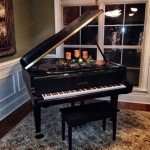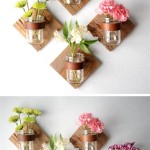How to Decorate a Kitchen Table: A Comprehensive Guide
The kitchen table serves as a central gathering point in many homes. It is a place for meals, conversations, homework, and often, a makeshift workspace. Therefore, its aesthetic appeal significantly impacts the overall ambiance of the kitchen and the experiences shared within it. Thoughtful decoration can transform a simple kitchen table into a welcoming and visually pleasing element. This article provides a comprehensive guide on how to decorate a kitchen table, covering various styles, functionalities, and considerations.
Understanding the Kitchen Table's Role and Style
Before embarking on the decoration process, it is crucial to understand the kitchen table's role within the home and the existing style of the kitchen itself. Is the table primarily used for formal dining, casual meals, or a combination of both? The frequency of use and the types of activities it hosts will significantly influence the decorative choices. Furthermore, the kitchen's overall style – whether modern, rustic, farmhouse, minimalist, or eclectic – should be reflected in the table's decorations to create a cohesive and harmonious design.
Consider the table's shape and size as well. A round table offers equal accessibility and encourages conversation, while a rectangular table can accommodate more people and is often better suited for larger spaces. Smaller tables benefit from minimalist decorations to avoid overcrowding, while larger tables can handle more elaborate arrangements. The existing materials of the table and chairs should also be taken into account. Wooden tables lend themselves well to natural and rustic decorations, while metal or glass tables often pair better with modern and minimalist accents.
Once the table's role, size, and the kitchen's style have been established, the selection of decorative elements can begin. The goal is to create a visually appealing and functional space that reflects the homeowner's personality and enhances the overall dining experience.
Key Elements of Kitchen Table Decoration
Several key elements contribute to a well-decorated kitchen table. These elements can be combined and adapted to suit individual preferences and the specific characteristics of the table and kitchen. These key elements include centerpieces, placemats/table runners, and functional accessories.
Centerpieces: The centerpiece is the focal point of the table and draws the eye. It can be a single item or a collection of items arranged to create a visual statement. Options for centerpieces are numerous and range from simple floral arrangements to more elaborate displays.
Fresh flowers are a classic and versatile choice. They add color, fragrance, and a touch of nature to the table. The type of flowers selected should complement the kitchen's style and the season. For example, sunflowers and wildflowers are suitable for a farmhouse kitchen in the summer, while tulips and daffodils can brighten a spring table. A simple vase or container is all that is needed to display the flowers.
Alternatively, a bowl of fruit or vegetables can serve as a visually appealing and practical centerpiece. This option is particularly well-suited for kitchens with a focus on healthy eating or a rustic aesthetic. Select fruits and vegetables that are in season and arrange them artfully in a decorative bowl or basket. Lemons, oranges, apples, and artichokes are all visually appealing options.
Candles are another popular choice for centerpieces. They create a warm and inviting atmosphere, especially during evening meals. A group of candles of varying heights and sizes can be arranged on a tray or in a candle holder. Consider using scented candles to add fragrance to the kitchen. However, be mindful of potential allergies or sensitivities when selecting scented candles.
For a more unique and personalized centerpiece, consider using decorative objects that reflect personal interests or hobbies. This could include a collection of vintage teacups, a small sculpture, or a framed photograph. The key is to choose items that are visually appealing and meaningful.
Placemats and Table Runners: Placemats and table runners serve both decorative and functional purposes. They protect the table from spills and scratches while also adding color, texture, and visual interest. The choice of placemats and table runners will depend on the table's material, the kitchen's style, and the formality of the dining experience.
For casual meals, simple fabric placemats or woven placemats are a practical and stylish choice. They are easy to clean and can be found in a wide variety of colors and patterns. Consider using placemats that complement the colors of the kitchen or the centerpiece.
For more formal occasions, consider using linen placemats or table runners with embellishments such as embroidery or lace. These can add a touch of elegance to the table setting. A table runner can also be used to add a pop of color or pattern to a plain table. Drape it lengthwise or across the width of the table, depending on the desired effect.
If the kitchen table is made of a delicate material, such as glass or marble, consider using padded placemats to protect the surface from scratches and heat damage.
Functional Accessories: In addition to centerpieces and placemats, functional accessories can also contribute to the table's decoration. These are items that are both practical and visually appealing, such as salt and pepper shakers, napkin holders, and fruit bowls.
Select salt and pepper shakers that are stylish and complement the kitchen's style. There are many options available, from classic glass shakers to more modern ceramic or metal designs. Consider using a salt cellar and pepper grinder instead of traditional shakers for a more sophisticated look.
Napkin holders can be both functional and decorative. Choose a napkin holder that complements the placemats and table runner. Options include metal napkin rings, wooden napkin holders, and fabric napkin dispensers.
A fruit bowl is a practical and visually appealing accessory that can be used to display fresh fruits and vegetables. Choose a decorative bowl or basket that complements the kitchen's style. Arrange the fruits and vegetables artfully to create a visually appealing display.
Styling Approaches for Different Kitchen Aesthetics
The general principles of kitchen table decoration can be adapted to suit different kitchen aesthetics. Here are some style-specific approaches:
Modern: A modern kitchen typically features clean lines, minimalist decor, and a focus on functionality. When decorating a kitchen table in a modern kitchen, opt for simple and uncluttered arrangements. A single vase with a few stems of greenery or a geometric sculpture can serve as a minimalist centerpiece. Use neutral-colored placemats and table runners, such as gray, white, or black. Choose functional accessories with clean lines and simple designs.
Rustic/Farmhouse: A rustic or farmhouse kitchen typically features warm colors, natural materials, and a focus on comfort. When decorating a kitchen table in a rustic or farmhouse kitchen, use natural elements such as wood, burlap, and cotton. A wooden bowl filled with fruit or vegetables can serve as a rustic centerpiece. Use burlap or linen placemats and table runners. Choose functional accessories with a vintage or handcrafted feel.
Minimalist: A minimalist aesthetic prioritizes simplicity and the absence of clutter. For a minimalist kitchen table, focus on essential items that are both functional and aesthetically pleasing. A single, well-chosen item, such as a sleek ceramic vase or a simple wooden bowl, can serve as a centerpiece. Opt for neutral-colored placemats or a plain linen table runner. Choose functional accessories with clean lines and a minimalist design.
Eclectic: An eclectic kitchen embraces a mix of styles and influences. When decorating a kitchen table in an eclectic kitchen, feel free to experiment with different colors, patterns, and textures. Combine vintage and modern elements, and don't be afraid to mix and match different styles. A unique collection of items, such as vintage teacups, decorative boxes, and travel souvenirs, can serve as an eclectic centerpiece. Use colorful placemats and table runners with interesting patterns and textures.
The selected decorative elements should enhance the kitchen's overall design. Maintaining consistency in color palettes and stylistic cues is of vital importance to ensure the kitchen table's decoration blends harmoniously with the rest of the space.
:strip_icc()/kitchen-table-ideas-17-becca-interiors-southampton-2ae87107ad6840779a77daf523d10323.jpeg?strip=all)
23 Kitchen Table Décor Ideas To Try In Your Home

Kitchen Table Design Decorating Ideas S

8 Décor Tips For Your Dining Table Everyday Classic Casual Home

Beautiful And Easy Dining Room Table Centerpiece Ideas Stonegable

Thrifty And Chic Diy Projects Home Decor

Cozy Dining Room Decorating Ideas Sanctuary Home Decor

15 Great Decor Ideas For Kitchen Table Centerpieces Centerpiece Dining Room Design
:max_bytes(150000):strip_icc()/8vjhlYyQ-fa78b5c1432341bba99390673e31d25c.jpeg?strip=all)
Dining Table Decor Ideas That Aren T Just For Occasions

40 Dining Room Decorating Ideas Bob Vila

Everyday Tips For Decorating The Dining Table
Related Posts







